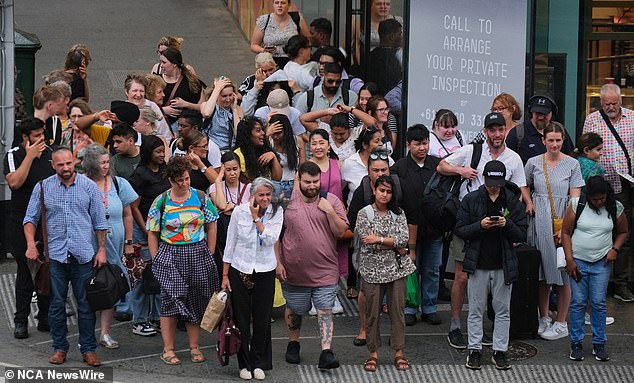Nearly 400,000 Victorians remained without power on Tuesday night after the region’s largest power station shut down as the state was hit by a wild storm, high winds and bushfires.
Many homes could be without power for days after AGL Energy’s Loy Yang A coal-fired power station in the Latrobe Valley closed shortly after 2pm on Tuesday, causing wholesale power prices to soar.
High winds reportedly toppled two transmission towers, leaving them unable to transmit electricity and causing the power plant to go offline.
It comes as Melbourne and surrounding regions were hit by storms, heavy rain and hail on Tuesday afternoon.
More than half a million Victorians were left without power at the worst of the weather.
Victorian Energy Minister Lily D’Ambrosio, who described the storm as “one of the largest power outages in the state’s history”, revealed that 375,000 homes were still without power shortly before midnight on Tuesday night.
Affected areas include Melbourne, Bendigo, Ballarat, Maryborough, Charlton and Shepparton.
Some homes could be left without power for days after AGL Energy’s Loy Yang A coal-fired power station in the Latrobe Valley (pictured) closed shortly after 2pm on Tuesday, causing wholesale electricity prices to plummet. the energy will skyrocket.

High winds reportedly toppled two transmission towers, leaving them unable to transmit electricity and causing the power plant to go offline (pictured)

Meanwhile, parts of Melbourne were hit by heavy downpours on Tuesday (pictured: a traveler shelters from the rain)
“By 11:15pm, power had been restored to another 82,000 Victorians,” Ms D’Ambrosio tweeted.
‘375,000 people remain without electricity, including 7,800 dependent on it.
‘At the peak, 529,000 people were without power due to physical damage to power lines caused by extreme weather. Crews are working through the night to restore power.
Emma Tyner, a spokesperson for Citipower and Powercor, admitted it could take “days” for power to be restored after high winds and lightning damaged electrical infrastructure.
“It’s widespread, from the western suburbs of Melbourne, Bendigo, to the inner suburbs of Melbourne, Ballarat, Maryborough, Charlton, Shepparton,” Ms Tyner told the ABC.
“The band of lightning and extraordinary winds that we have seen move across the state has caused extensive damage and we are still seeing this weather pattern.”
In response, the Australian Energy Market Operator ordered to cut electricity use across the grid, according to a statement on Tuesday afternoon.
Elsewhere, residents were forced to flee their homes in western Victoria when bushfires sparked by dry lightning broke out, with some properties reported to have been lost in the flames in Pomonal.

The leave orders apply immediately to those in Halls Gap, Bellfield, Bellfield Settlement, Lake Fyans, Pomonal, Dadswells Bridge, Ledcourt, Roses Gap and Wartook (pictured: a shot from Pomonal where houses were reportedly lost in the flames).
Residents and tourists in the Grampians National Park were asked to evacuate immediately due to two fires in Bellfield and Mount Stapylton.
The exit orders apply immediately to those in Halls Gap, Bellfield, Bellfield Settlement, Lake Fyans, Pomonal, Dadswells Bridge, Ledcourt, Roses Gap and Wartook.
The Mount Stapylton fire will head towards Dadswells Bridge and Ledcourt, but conditions are “dangerous and unpredictable”, the emergency website stated.
People affected by that fire have been told to head towards Stawell, with authorities warning that the Western Highway is closed between Horsham and the Warracknabeal-Stawell Rd intersection.
The Bellfield Fire is moving south towards Pomonal, and people affected by that fire are told to head towards Ararat using Ararat Halls Gap Rd.
Some 38 schools and 17 early childhood centers have closed due to dangerous conditions.
A watch and action warning is also issued for all of Melbourne and extends from Port Phillip Bay to the Bellarine and Mornington Peninsulas, with hail falling in some areas.
A catastrophic fire danger classification has been declared for the Wimmera region, extreme fire danger is forecast for the Mallee, a high danger classification has been established for the rest of Victoria except East Gippsland, and there is a complete ban on fire in much of the state. .

Melbourne and surrounding regions were hit by rain, hail and heavy rain on Tuesday afternoon, which uprooted trees.

Melbourne commuters hit by heavy rain and winds

Hail the size of golf balls fell in Ballarat, while parts of Melbourne suffered extensive flooding and many trees uprooted in urban areas (pictured).

Many people were forced to flee their homes, while others were told it was “too late to leave” and ordered to seek shelter.
It is the first catastrophic rating since the Black Summer of 2019-20, which was one of the most intense and catastrophic fire seasons on record in Australia.
Meanwhile, a severe thunderstorm warning has been issued for parts of West and South Gippsland.
Melbourne and its surrounding suburbs were hit by thunderstorms, rain and hail on Tuesday afternoon as the state monitoring center issued a severe thunderstorm warning for the city.
Hail the size of golf balls fell in Ballarat, while parts of Melbourne suffered extensive flooding and many trees were uprooted in urban areas.
Storm damage affected the rail network with commuters experiencing long delays and replacement bus services on some lines.

Commuters in Melbourne ducked to shelter from the rain on Tuesday afternoon.


